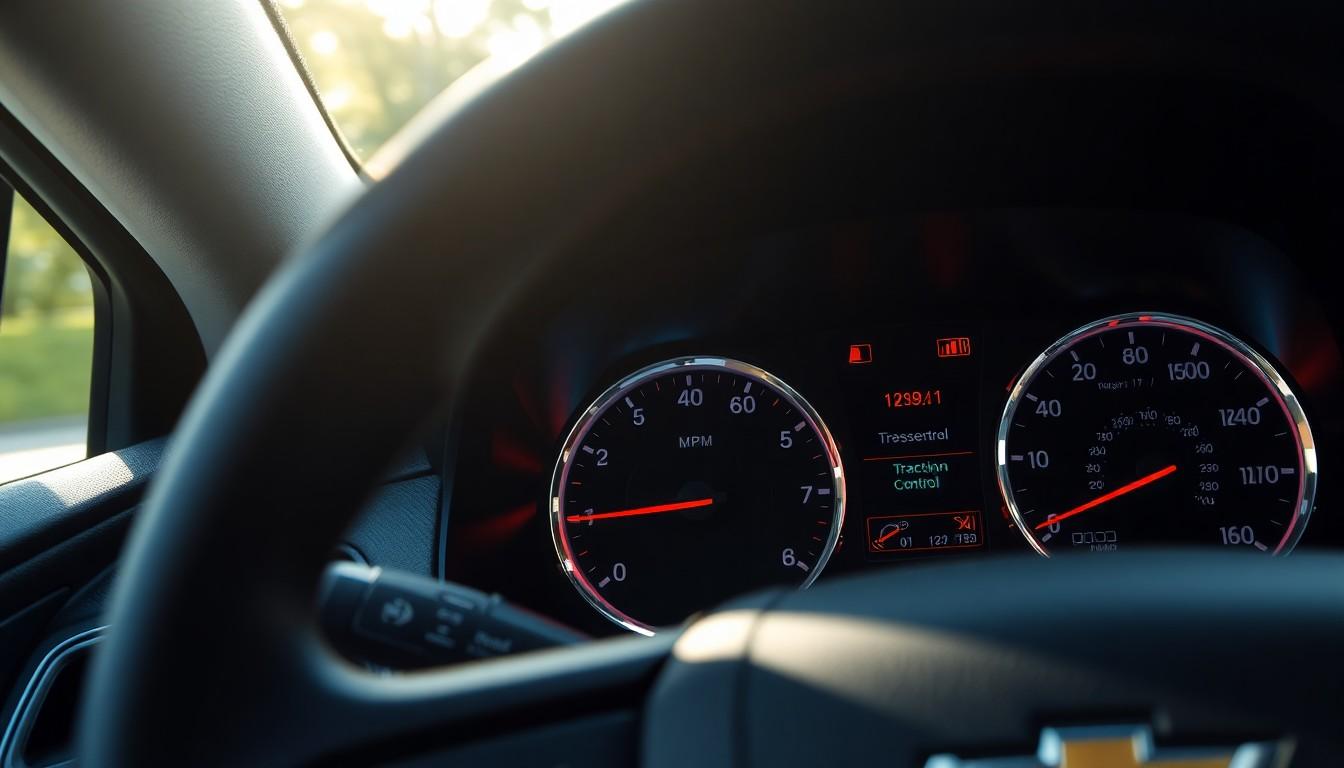Is your Chevy Cruze’s traction control light suddenly glowing on your dashboard? You’re not alone. This common indicator can trigger concern for many drivers, but understanding why it’s illuminated is the first step toward resolving the issue.
We’ll jump into the various reasons your Chevy Cruze’s traction control light might be on—from simple sensor malfunctions to more serious system failures. Whether you’re experiencing slippery road conditions or facing potential mechanical problems, identifying the root cause will help you determine if it’s a quick fix or a trip to the mechanic. Stay with us as we explore the answers that can get your Cruze back to peak performance.
Understanding the Traction Control System in Your Chevy Cruze
The traction control system (TCS) in your Chevy Cruze monitors wheel spin and automatically adjusts power delivery to maintain optimal traction on the road. This sophisticated system works alongside the stability control system to prevent wheels from spinning excessively during acceleration, especially on slippery surfaces. When functioning properly, TCS helps your Cruze maintain stability and control in various driving conditions including rain, snow, and ice.
Your Cruze’s traction control uses wheel speed sensors to detect when one wheel is spinning faster than the others. Upon detecting wheel slip, the system responds by either reducing engine power to the affected wheel or applying brake pressure to that exact wheel. These automatic adjustments happen within milliseconds, often faster than a driver could manually react to loss of traction.
The TCS in Chevy Cruze models connects directly to the vehicle’s engine control module (ECM) and antilock brake system (ABS). This integration creates a comprehensive safety network that constantly monitors driving conditions and vehicle performance. Many drivers don’t realize their traction control shares components with the ABS system, which explains why issues with one system often affect the other.
Understanding how this system operates gives you valuable insight when troubleshooting traction control light issues. The illuminated warning light typically indicates the system has detected an abnormality and has either partially or fully disabled its functionality. Under normal circumstances, you’ll briefly see this light during your vehicle’s startup sequence as the system performs its self-diagnostic check.
Common Reasons Why Your Traction Control Light Is On
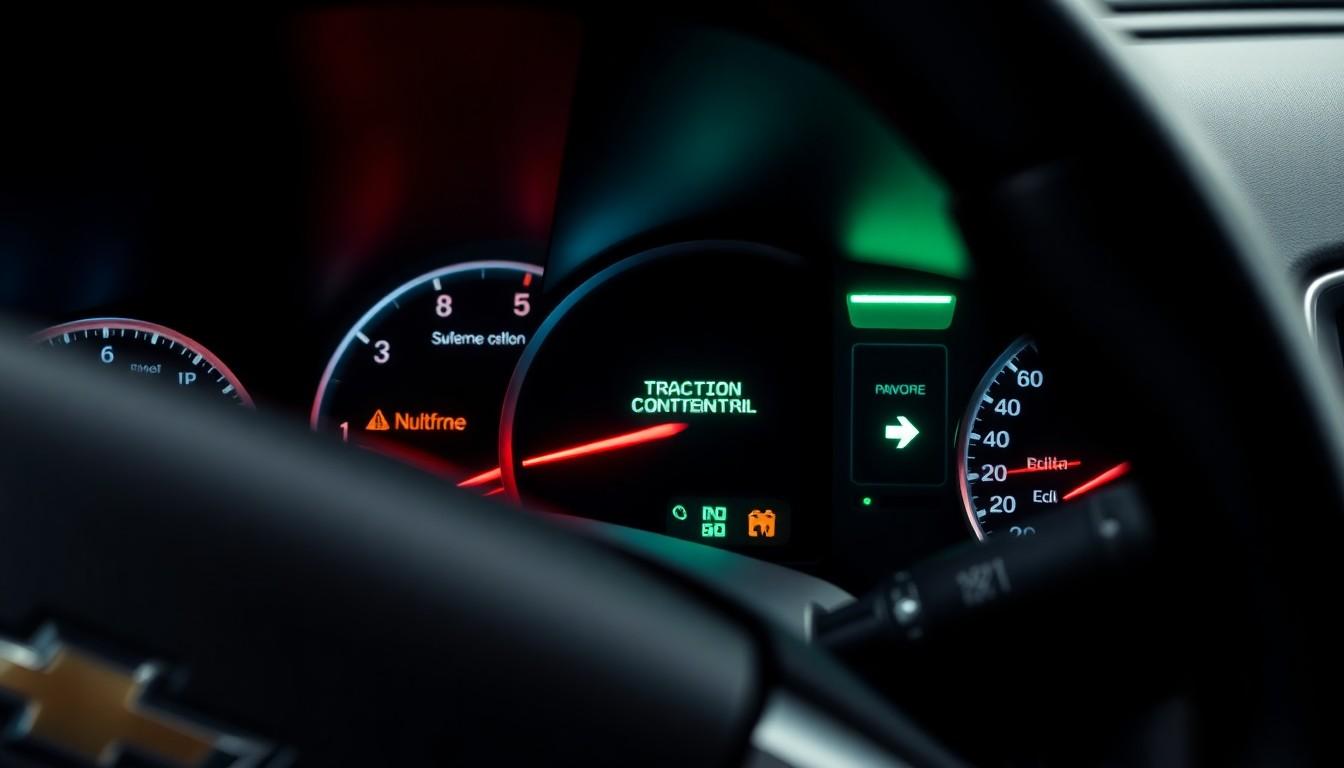
The traction control light in your Chevy Cruze can illuminate for several exact reasons. Understanding these potential causes helps you diagnose the issue quickly and determine whether it requires professional attention.
Low Tire Pressure or Uneven Tire Wear
Improper tire pressure and uneven wear patterns commonly trigger the traction control light in Chevy Cruze vehicles. Your car’s traction control system relies on consistent tire contact with the road to maintain stability. When tires are underinflated or have developed irregular wear patterns, the system detects these abnormalities and activates the warning light. Checking tire pressure regularly and maintaining the manufacturer’s recommended PSI levels can prevent this issue from occurring. Regular rotation and alignment services also ensure even tire wear, reducing false triggers of the traction control system.
ABS System Malfunction
The Anti-Lock Braking System works in tandem with your traction control system, sharing many components and sensors. Problems with the ABS often cause the traction control light to illuminate since these systems are interconnected. Your ABS controller communicates directly with the traction control module, so when one system experiences problems, it typically affects the other. Common ABS issues include damaged wiring, controller malfunctions, or problems with the brake fluid pressure. Addressing these ABS problems promptly not only resolves the traction control light but also ensures your vehicle’s braking system functions correctly.
Faulty Wheel Speed Sensors
Wheel speed sensors provide critical information to your traction control system about how fast each wheel is rotating. These sensors monitor individual wheel speeds and transmit this data to the traction control module. Dirt, damage, or misalignment of these sensors creates inaccurate readings, triggering the warning light. Located near each wheel, these sensors are exposed to road debris, moisture, and temperature fluctuations that can impact their performance. Cleaning or replacing faulty wheel speed sensors often resolves traction control light issues in Chevy Cruze models.
Issues with the Steering Angle Sensor
The steering angle sensor plays a crucial role in your traction control system’s functionality by monitoring the direction and angle of your steering wheel. Your Chevy Cruze uses this information to determine which way you’re turning and how sharply, allowing the traction control system to apply appropriate adjustments. Misalignment or failure of this sensor confuses the system about your intended direction, activating the warning light as a safety precaution. This sensor typically requires professional calibration or replacement when malfunctioning, as it’s integrated into the steering column assembly and connected to multiple vehicle safety systems.
How to Diagnose Traction Control Problems at Home
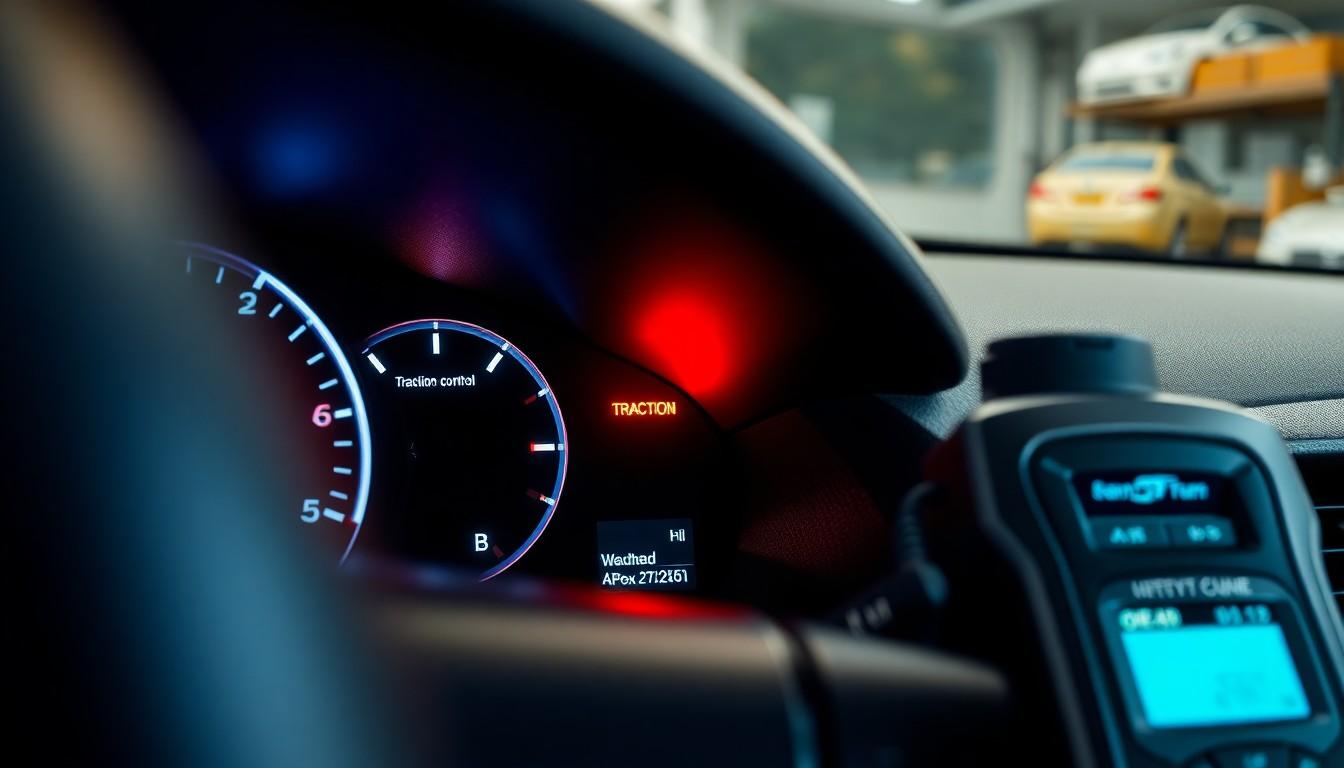
Diagnosing traction control issues in your Chevy Cruze doesn’t always require a trip to the mechanic. With some basic knowledge and simple tools, you can identify many common problems that trigger the traction control light.
Using the Dashboard Information
Your Chevy Cruze’s dashboard provides valuable diagnostic clues when the traction control light illuminates. Check if the Check Engine Light appears alongside the traction control warning, as this combination often indicates related problems. An OBD-II code scanner connects to your vehicle’s computer port to retrieve exact trouble codes, revealing issues like engine misfires (codes P0301-4) or ABS system malfunctions. The “Service StabiliTrak” message frequently accompanies the traction control light, pointing to problems with the stability control system that works in tandem with traction control. These dashboard indicators create a diagnostic roadmap that helps pinpoint exactly which component requires attention.
Manual Inspection Techniques
The ABS system shares components with your traction control system, making it a critical area to examine when troubleshooting. Inspect the throttle body for carbon buildup or damage, as its malfunction can trigger both reduced engine power and traction control warnings. Examine your tires for proper inflation, even wear patterns, and matching sizes across all wheels. Uneven tire conditions confuse wheel speed sensors, activating the traction control light. CV axles and drivetrain components merit close inspection for signs of damage, as deterioration in these areas commonly triggers traction warnings. Check the steering wheel angle sensor for proper calibration, as this device communicates critical directional data to the stability systems. Verify your vehicle’s alignment, as misalignment can cause intermittent flashing of both traction control and StabiliTrak lights. Look for loose electrical connections throughout these systems, as poor connectivity often creates intermittent problems that activate warning lights.
| Inspection Area | What to Check For | Potential Code/Warning |
|---|---|---|
| Engine | Misfires, throttle body issues | P0301-4, reduced power mode |
| ABS System | Sensor function, connection integrity | ABS-related codes |
| Tires | Inflation, wear patterns, matching sizes | TC light activation |
| Drivetrain | CV axle damage, drivetrain integrity | TC light with vehicle movement |
| Sensors | Steering angle sensor calibration | Service StabiliTrak message |
| Alignment | Proper wheel alignment | Flashing TC/StabiliTrak lights |
When to Seek Professional Help

Professional assistance becomes essential for certain traction control light issues in your Chevy Cruze. Mechanics have specialized diagnostic equipment that can pinpoint problems you can’t identify at home.
Persistent Issues
The traction control light remaining illuminated after addressing common causes like engine misfires indicates deeper problems. Multiple cylinder misfires (shown by codes P0301-P0304) often require professional diagnosis to determine if they’re causing your traction control malfunction.
Multiple Warning Lights
Various warning indicators lighting up simultaneously signals complex system integration failures. When your check engine light, ABS light, and traction control light all activate together, it’s a clear sign that professional intervention is needed to identify the interconnected issues affecting your vehicle’s safety systems.
Vehicle Performance
Noticeable performance problems demand immediate professional attention. Shaking, sputtering, or your Cruze entering reduced power mode alongside the traction control light points to serious mechanical issues that could affect your throttle body or CV axles.
Lack of Diagnostic Tools
Limited access to proper diagnostic equipment restricts your ability to accurately identify the problem source. Without an OBD-II scanner to read error codes from your vehicle’s computer system, a professional mechanic can save you time and prevent incorrect repairs by accurately diagnosing issues with components like your steering wheel angle sensor or ABS system.
Safety Implications of Driving with the Traction Control Light On
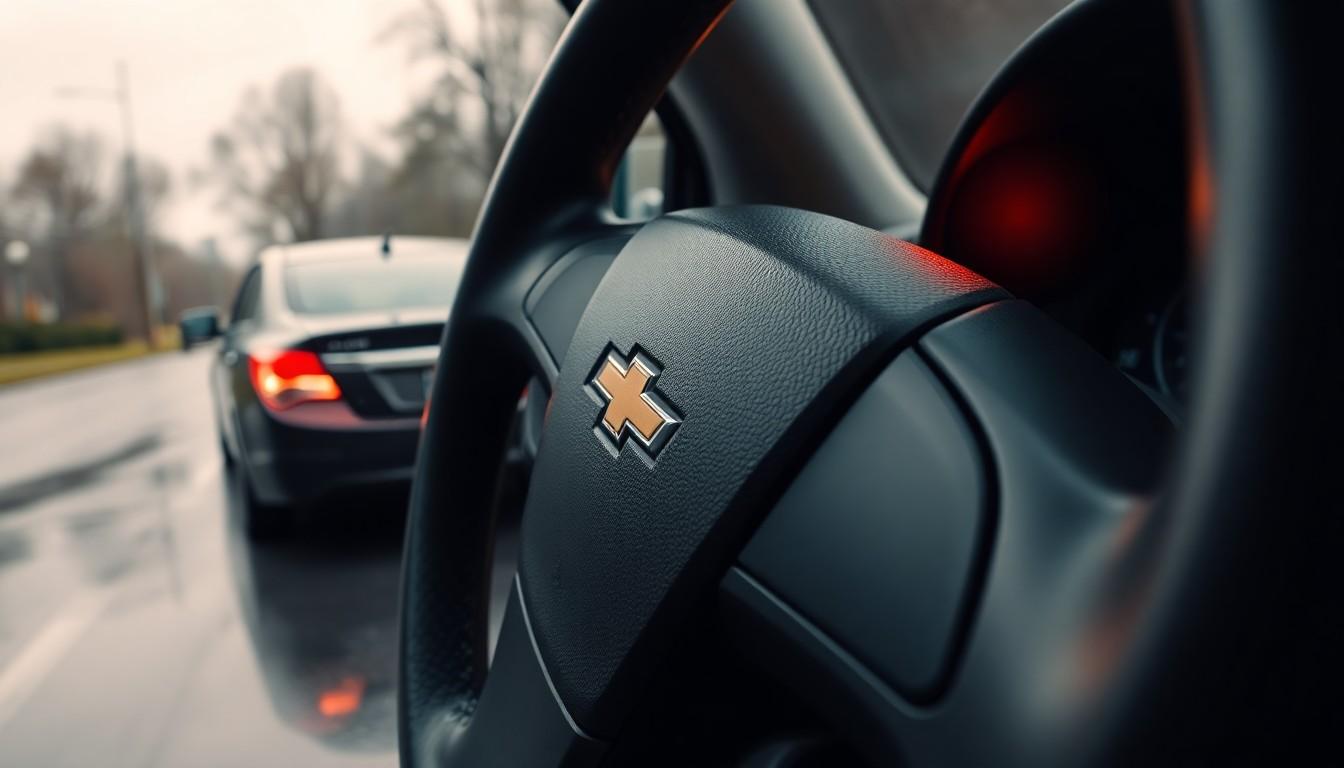
Driving with an active traction control light in your Chevy Cruze compromises vehicle safety in several critical ways. The illuminated warning indicates a malfunctioning system that’s designed to keep your car stable during challenging driving conditions.
Reduced Vehicle Stability
Your Chevy Cruze’s traction control system prevents wheel spin and maintains optimal grip on the road. When this system fails, the vehicle becomes significantly less stable, especially on wet or icy surfaces. Cornering abilities diminish dramatically, making routine driving maneuvers potentially hazardous in adverse weather conditions.
Compromised Braking Performance
The traction control system in the Chevy Cruze works along with the Anti-lock Braking System (ABS). Issues triggering the traction control light often affect the ABS functionality as well. This connection means your vehicle might experience longer stopping distances and reduced braking control, particularly during emergency braking situations.
Risk of Engine Damage
Engine misfires in exact cylinders (indicated by codes like P0301 or P0304) frequently trigger the traction control light in Chevy Cruze models. Continuing to drive with these misfires not only affects vehicle stability but can lead to permanent engine damage, potentially resulting in complete engine failure while driving.
Unexpected Performance Limitations
A malfunctioning throttle body often causes the traction control light to illuminate and might force your vehicle into reduced power mode (sometimes called “limp mode”). This severe limitation restricts your Chevy Cruze’s acceleration capabilities and top speed—creating dangerous situations when merging onto highways or handling busy intersections.
Alignment and Stability Issues
Bad CV axles or improper wheel alignment can cause the traction control system to detect abnormal wheel rotation patterns. These mechanical problems manifest through flashing traction control lights and create unpredictable handling characteristics. Your steering responsiveness may become inconsistent, making the vehicle harder to control precisely.
Steering System Complications
A faulty steering wheel angle sensor disrupts your Chevy Cruze’s ability to determine the steering wheel position accurately. This malfunction prevents the traction control system from properly compensating during turns, reducing directional stability and increasing the risk of skidding during cornering maneuvers.
Elevated Accident Risk
All these safety implications combine to create a significantly higher accident risk when driving with an active traction control light. Your Chevy Cruze’s compromised stability systems mean reduced control exactly when you need it most—during emergency maneuvers or in challenging road conditions. Addressing the underlying cause promptly helps ensure your safety and prevents more expensive repairs down the road.
How to Reset Your Traction Control System
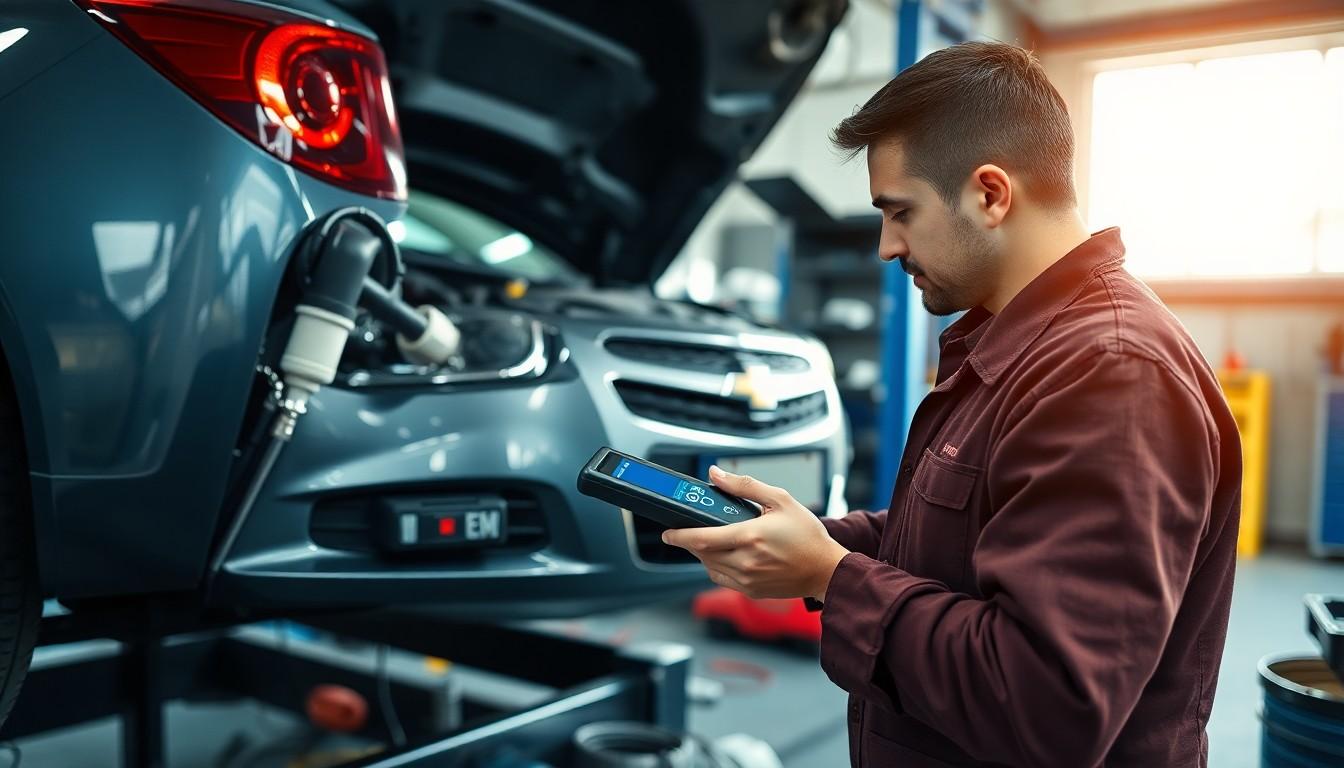
Using the OBD-II Scanner Method
An OBD-II scanner effectively clears trouble codes that trigger the traction control light in your Chevy Cruze. Simply connect the scanner to your vehicle’s diagnostic port, typically located under the dashboard on the driver’s side. Navigate through the scanner’s menu to find and clear any stored codes related to the traction control system. Many Chevy Cruze models store codes like P0301-P0304 for engine misfires that commonly trigger the traction control light. After clearing the codes, restart your vehicle to complete the reset process.
Battery Disconnect Method
The battery disconnect technique resets all electronic systems in your Chevy Cruze, including the traction control system. First, ensure your vehicle is completely powered off and the key is removed from the ignition. Open the hood and locate the battery, then disconnect the negative terminal (usually marked with a minus sign). Leave the battery disconnected for approximately 15 minutes to allow the vehicle’s computer systems to fully reset. Reconnecting the battery clears stored fault codes that might be causing the traction control light to remain illuminated, especially after fixing underlying issues like spark plug or ignition coil replacements.
Using the Dashboard Controls
Chevy Cruze vehicles feature dedicated traction control buttons that allow direct system manipulation. Locate the traction control button on your dashboard, typically marked with a car icon with skid marks. Press this button once to temporarily disable traction control when needed. Hold the button for approximately 5 seconds to reset both the traction control and stability control systems simultaneously in many Cruze models. This method works particularly well for addressing temporary system glitches that trigger warning lights without serious mechanical issues.
Post-Repair System Reset
Resetting your traction control system after completing repairs ensures proper system functionality. For engine-related fixes such as replacing spark plugs or ignition coils that caused misfires (codes P0301-P0304), the system typically needs a complete reset to recognize the repairs. After addressing ABS system problems, throttle body malfunctions, alignment issues, or steering wheel angle sensor repairs, perform a system reset to re-calibrate all affected components. Testing your vehicle after the reset confirms whether the underlying issue has been completely resolved or requires additional attention.
Preventing Future Traction Control Issues

Regular Maintenance
Regular maintenance prevents many traction control problems in your Chevy Cruze. Checking and replacing spark plugs and ignition coils helps avoid engine misfires that commonly trigger the traction control light. Clean connections and secure sensors play a critical role in maintaining system functionality. Periodic inspection of wheel speed sensors ensures they’re free from debris and damage that could cause false readings.
Scanning for Codes
OBD-II code scanners provide invaluable diagnostic information when your traction control light illuminates. Scanning for trouble codes identifies exact issues affecting your vehicle’s stability systems. Early detection through regular code checks prevents minor problems from developing into major repairs. Many auto parts stores offer free code scanning services if you don’t own a scanner.
Addressing ABS Issues
ABS problems frequently cause traction control light activation in the Chevy Cruze. Inspect wheel sensors for damage or excessive dirt buildup that might interfere with proper operation. Check the ABS module connections for corrosion or looseness that could disrupt signal transmission. Addressing ABS codes promptly prevents cascading failures throughout interconnected vehicle systems.
Updating Software
Software glitches sometimes trigger traction control warnings in modern vehicles like the Cruze. Visit your dealership or certified mechanic periodically for system updates that resolve known software issues. Manufacturers regularly release updates that improve system stability and performance. Software maintenance proves especially important after major repairs or component replacements.
Battery Maintenance
Battery disconnection serves as an effective reset method after completing repairs. Disconnect your battery terminals for 15-20 minutes to clear residual codes and reset the vehicle’s electronic systems. Reconnect the battery and test drive your vehicle to verify if repairs successfully resolved the traction control light issue. Proper battery maintenance ensures stable voltage that supports optimal electronic system function.
Conclusion
Addressing a traction control light in your Chevy Cruze shouldn’t be ignored. We’ve explored the various causes from simple sensor issues to complex system failures that trigger this warning.
Remember that this light is your vehicle’s way of communicating potential safety concerns. Whether it’s tire pressure issues wheel speed sensor malfunctions or ABS problems quick diagnosis is essential for your safety.
For minor issues you can attempt troubleshooting at home using our diagnostic tips. But persistent warning lights multiple system failures or performance problems warrant professional attention.
By maintaining your vehicle regularly and responding promptly to warning signals you’ll keep your Cruze’s traction control system functioning properly ensuring optimal performance and safety on the road.
Frequently Asked Questions
What causes the traction control light to come on in a Chevy Cruze?
The traction control light in a Chevy Cruze can illuminate due to several reasons including low tire pressure, uneven tire wear, ABS system malfunctions, faulty wheel speed sensors, or issues with the steering angle sensor. Sometimes it activates temporarily during slippery road conditions, which is normal, but persistent illumination indicates a system problem that needs attention.
Is it safe to drive with the traction control light on?
Driving with the traction control light on is not recommended for safety reasons. It indicates your vehicle’s stability control is compromised, which can affect handling during emergency maneuvers or on slippery roads. Your braking performance may also be reduced, and continued driving could lead to engine damage or unexpected performance limitations that increase accident risk.
How can I diagnose traction control issues at home?
You can diagnose traction control issues by checking dashboard information for other warning lights, using an OBD-II scanner to retrieve trouble codes, and manually inspecting key components. Check your tires for proper pressure and wear, examine the ABS system for damage, inspect the throttle body for dirt, look at drivetrain components, and verify steering angle sensor functionality.
Can I reset the traction control system myself?
Yes, you can reset the traction control system yourself using an OBD-II scanner to clear error codes, disconnecting the battery for 15 minutes (remember to have your radio code handy), or using dashboard controls if your vehicle has a TCS button. However, these methods only work if the underlying issue has been fixed, otherwise the light will return.
When should I seek professional help for traction control issues?
Seek professional help if the traction control light remains on after addressing common causes, multiple warning lights are illuminated simultaneously, you experience performance problems like shaking or reduced power, or you lack access to proper diagnostic tools. Complex system integration failures typically require expert intervention for accurate diagnosis and repair.
How does the traction control system work in a Chevy Cruze?
The traction control system in a Chevy Cruze monitors wheel spin through speed sensors and adjusts power delivery to maintain optimal traction. When it detects a wheel spinning faster than others, it reduces engine power or applies brake pressure to that wheel. It works with the stability control system and is integrated with the engine control module and antilock brake system.
What regular maintenance can prevent traction control issues?
Regular maintenance to prevent traction control issues includes checking and maintaining proper tire pressure, rotating tires regularly, scanning for error codes even when no warning lights appear, promptly addressing ABS problems, updating vehicle software when recommended, and keeping the battery in good condition. These preventive measures help avoid minor issues escalating into major repairs.
Does low tire pressure affect the traction control system?
Yes, low tire pressure significantly affects the traction control system. Underinflated tires have different rolling diameters, which the wheel speed sensors detect as potential slippage. This can trigger false traction control activation and illuminate the warning light. Maintaining proper tire pressure according to your owner’s manual is essential for traction control system functionality.

